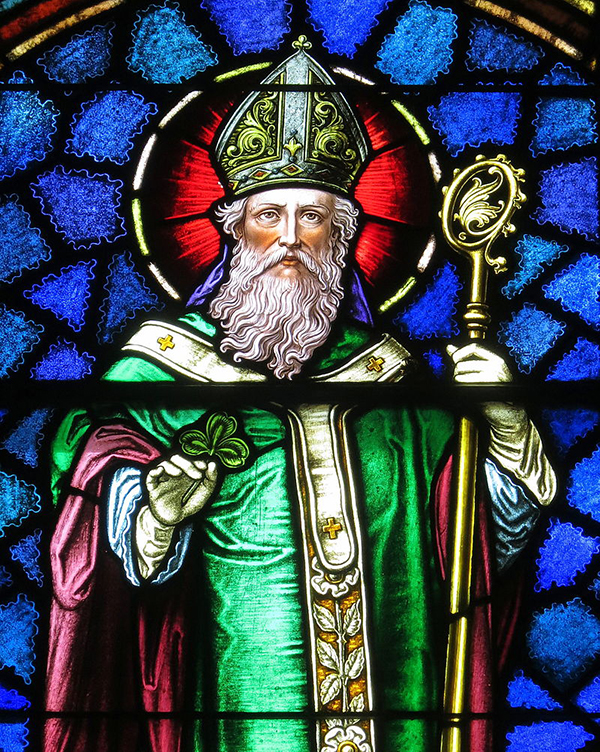
March saint: St. Patrick
The story of Ireland’s patron, St. Patrick, — one of the world’s most popular saints — comes to us as a mix of both legend and fact. For instance, it is said that he drove all the snakes out of Ireland; however, because of the cold climate there after the last ice age, there were no snakes on the island to begin with. His mission was also not a particularly popular one among his fellow clergy, who considered the Irish to be both barbaric and hostile. And until the Irish Rebellion of 1798, the color associated with Patrick was blue, not green.
So, what is the real story of St. Patrick? To begin with, he was not born in Ireland, but likely in another part of what we today know as Great Britain around 386 A.D. For his part, Patrick referred to himself as both a Roman and a Briton; it wasn’t until he was captured by Irish raiders at the age of 16 and sold as a slave in Ireland that he set foot in the place that was to dominate so much of his life.
Forced to work as a shepherd, Patrick found that the time he spent alone was an opportunity to come closer to God in prayer. When he was 20, he was told in a dream that his time of slavery was over, and he subsequently escaped aboard a ship which took him home to his family.
Rather than leave him bitter, his experiences instead led him to study for the priesthood. He had had another dream, this one telling him that his vocation was in pagan Ireland; from that point on, he longed to return to that country as a missionary. Consecrated as a bishop at the age of 43, he eventually was able to realize his desire, arriving at Slane, Ireland, in 433.
What happened next is also the subject of legends. According to one of them, he confronted a druid chieftain who attempted to kill him; an intervention from God, however, not only saved the saint’s life but enabled him to make his first convert.
For the next 40 years, Patrick labored tirelessly on behalf of the Irish people. His success was due in part to the fact that, during the time of his slavery, he had learned the Celtic language and was able to speak to the people in their native tongue. He was also adept at taking pagan symbols and putting them to Christian use. The Irish, for instance, were worshippers of the sun; Patrick took this basic word and spoke of worshipping the “Son.” As Father Liam Lawson notes, “the Celtic cross we know today was basically a cross superimposed on the sun. … Patrick converted sun worship to Son worship.” He is also famous for using a shamrock, or three-leaved clover, to help explain the Blessed Trinity.
By his death in 460, Patrick had built hundreds of churches and converted thousands of people. Patron of Ireland, his feast is March 17.
Sources for this article include:
catholic.org/saints/saint.php?saint_id=89
franciscanmedia.org/saint-of-the-day/saint-patrick
Schreck, Alan. “Catholic Church History from A to Z.” Michigan: Servant Publications, 2002.

